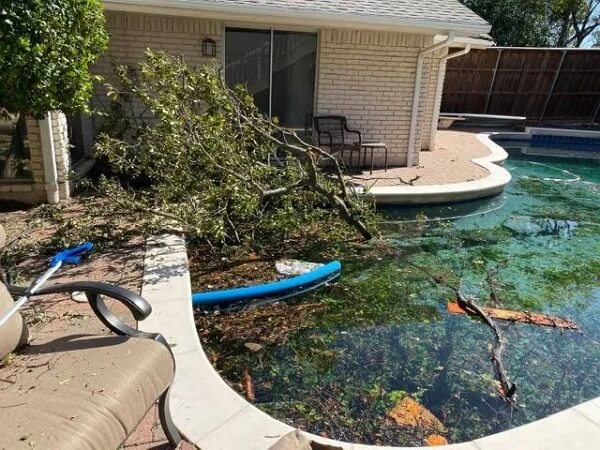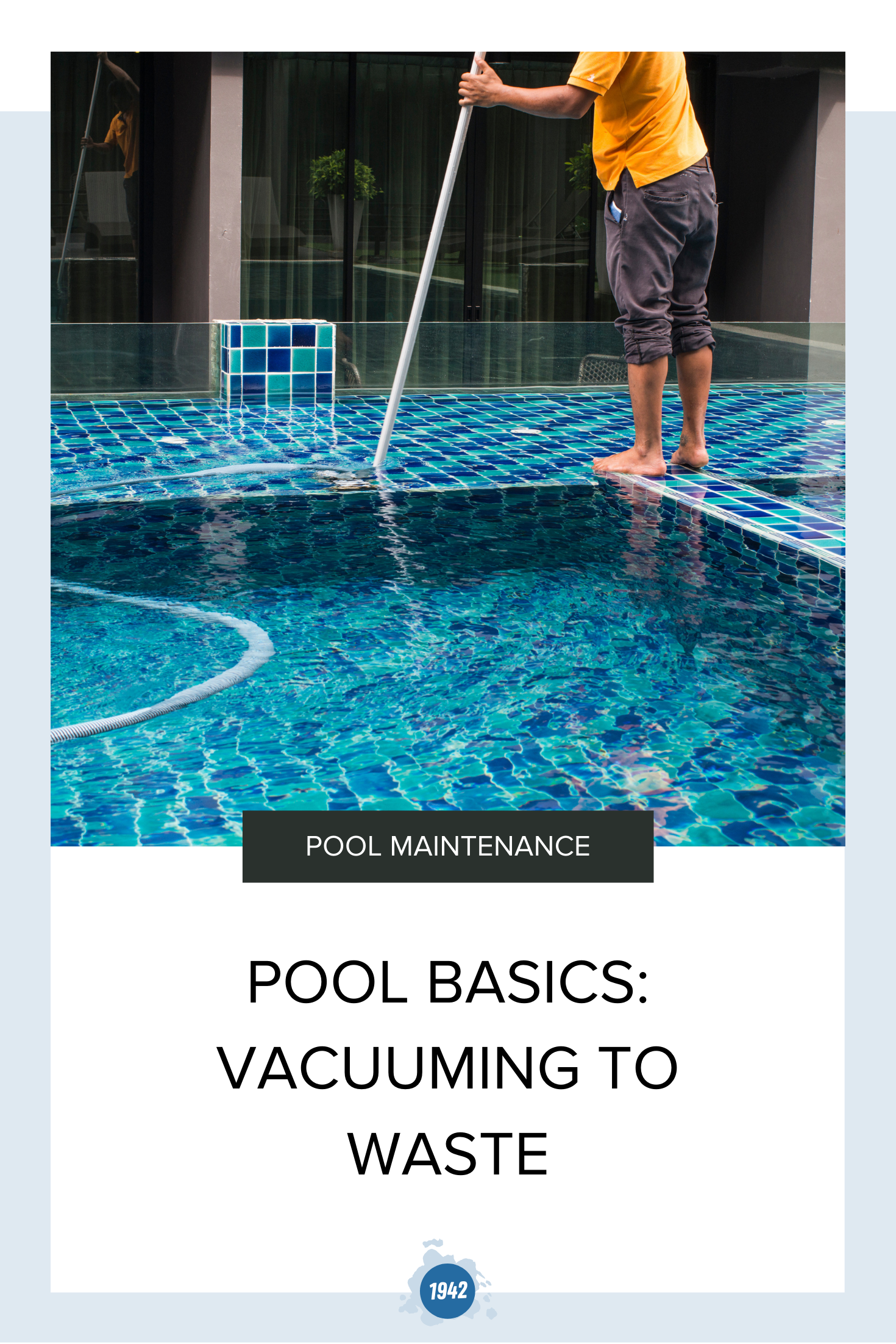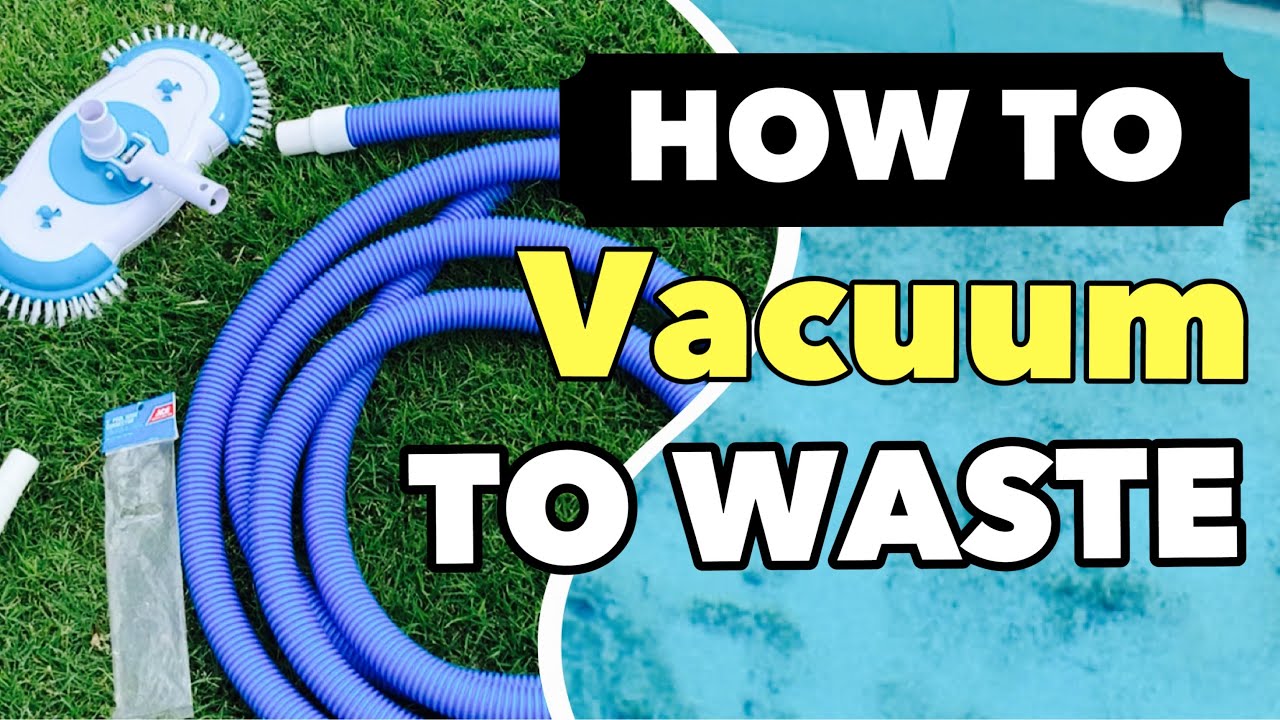As an Amazon Associate, I earn from qualifying purchases
Vacuum to waste is a pool cleaning method that removes debris directly out of the pool, bypassing the filter system. This technique helps prevent clogging and maintains filter integrity.
In the world of pool maintenance, ensuring a clean and healthy swimming environment is paramount. Vacuuming to waste plays a critical role, especially when tackling an abundance of dirt, algae, or other fine particles. Traditional vacuuming methods circulate water through the pool’s filter, but vacuuming to waste expels the water and contaminants straight out of the pool.
This method is particularly useful after storms, intense weather events, or when the pool has not been cleaned for an extended period. It’s a straightforward solution for maintaining water clarity without overburdening the filtration system, ensuring that your pool remains a pristine oasis for enjoyment and relaxation.

Credit: www.aidot.com
Introduction To Vacuum To Waste
Owning a pool comes with the joy of cool dips on hot days. But it also brings the task of keeping it clean. One method for tackling tough pool cleaning jobs is the “vacuum to waste” approach. This method helps when the pool has a lot of dirt or algae.
The Basics Of Pool Maintenance
Regular pool maintenance keeps the water safe and inviting. It involves skimming, brushing, and vacuuming. Keeping the water balanced and the filter system running smoothly is also key. Here are some steps you should take:
- Test water for pH, chlorine, and alkalinity levels.
- Skim the surface to remove leaves and debris.
- Brush the walls and floor to prevent algae.
- Vacuum to remove dirt from the pool’s bottom.
- Clean filters to ensure proper water flow.
Vacuum To Waste As A Cleaning Method
Vacuum to waste is a method used for severe pool cleaning. It’s best for removing large amounts of debris or algae. This method bypasses the filter system. Instead, the debris is sent directly out of the pool. This prevents clogging of the filter and keeps the pool cleaner.
Here’s how it works:
- Set the pool filter valve to “waste”.
- Connect the vacuum to the skimmer.
- Start vacuuming the pool floor.
- Debris exits the pool through the waste line.
Note: This method can lower water levels. Make sure to monitor the pool while vacuuming. Refill the pool to the correct level after cleaning.
When To Choose Vacuum To Waste
Knowing when to choose Vacuum to Waste is crucial for maintaining a clean and clear pool. This method is a powerful tool for pool owners, especially when facing stubborn pool issues.
Identifying Pool Issues
Pool problems can vary widely, but some key issues signal the need for vacuuming to waste. These include:
- Algae blooms that leave the pool green and cloudy.
- Large debris after storms or neglected maintenance.
- Excessive dirt or sand that regular filtering can’t handle.
Situations That Require Vacuuming To Waste
Certain situations demand this method for immediate and effective results. Here’s when to opt for it:
- When the pool is overwhelmed by algae.
- If there’s heavy sediment at the bottom.
- After severe weather events that introduce large debris.
Always remember, vacuuming to waste will lower water levels, so be ready to refill your pool.
Benefits Of Vacuuming To Waste
Vacuuming to waste is a pool cleaning method. It removes debris and algae directly from the pool. This method does not recirculate the debris through the pool’s filter system.
Preventing Filter Clogging
Vacuuming to waste helps prevent filter clogging. When you vacuum normally, large debris can clog the filter. This can cause stress on your pool’s filtration system. By bypassing the filter, you protect it from damage. This extends the life of your pool equipment.
Immediate Removal Of Debris And Algae
Immediate removal of debris and algae is another benefit. This method is effective, especially when dealing with large amounts of debris or severe algae blooms. It ensures that these contaminants are expelled from the pool immediately. This helps maintain a clean and healthy pool environment.
- Fast and efficient cleaning
- Reduces chemical demand by removing contaminants directly
- Improves water clarity and quality

Credit: www.browningpools.com
Step-by-step Guide To Vacuuming To Waste
Vacuuming to waste is a pool cleaning method. It removes debris and algae. This guide helps pool owners. Follow these steps for a clean pool.
Setting Up The Pool Equipment
Proper setup is vital. It prevents equipment damage. Here’s how to set it up:
- Turn off the pool pump.
- Set the multiport valve to “Waste”.
- Attach the vacuum hose to the skimmer.
- Ensure the pool pump basket is clean.
- Turn on the pump to start.
Proper Technique For Effective Results
Effective vacuuming requires technique. Follow these steps:
- Submerge the vacuum head. Release air from the hose.
- Begin at the shallow end. Move slowly.
- Overlap each stroke for thorough coverage.
- Watch the pool’s water level. Add water if needed.
- After finishing, return the valve to its original position.
Common Mistakes And Troubleshooting
Vacuuming to waste can be a pool owner’s best friend. This method removes debris directly out of the pool, bypassing the filter system. Yet, without proper knowledge, mistakes happen. Learn how to dodge common errors and fix them fast.
Avoiding Potential Pitfalls
Knowing what to avoid saves time and keeps your pool healthy:
- Check water levels: Ensure the pool has enough water before starting.
- Use the right setting: Set your pool pump to the “waste” or “drain” mode.
- Monitor the process: Keep an eye on the pool to prevent over-draining.
Solving Common Problems
Run into an issue? Here’s how to fix it:
| Problem | Solution |
|---|---|
| Pool Losing Too Much Water | Stop vacuuming and add more water. |
| Pump Not Priming | Check for clogs and ensure the lid is sealed. |
| Debris Returns to Pool | Recheck the pump setting. It should be on “waste”. |
Maintaining Pool Health Post-vacuuming
Vacuuming to waste removes debris and algae from a pool. This process bypasses the filter. It sends dirty water directly out of the pool. Once you’ve vacuumed to waste, it’s crucial to restore your pool’s health. Here’s how to ensure clean, balanced water after vacuuming.
Restoring Chemical Balance
After vacuuming, the pool’s chemical balance may be off. It’s important to test the water. You may need to adjust the pH, alkalinity, and chlorine levels.
- Test the water: Use a test kit or test strips.
- Adjust pH: Aim for a pH level between 7.2 and 7.6.
- Balance alkalinity: Maintain alkalinity between 100-150 ppm.
- Chlorinate: Ensure chlorine levels are between 1-3 ppm.
Regular Maintenance Tips
Regular maintenance keeps the pool safe and inviting. Follow these steps for ongoing pool care.
| Task | Frequency |
|---|---|
| Skim Surface | Daily |
| Brush Walls | Weekly |
| Check Filter | Weekly |
| Test Water | Weekly |
| Shock Pool | Bi-weekly |
Remember, cleaning and testing are key. Stick to a schedule. This will keep your pool ready for a refreshing dip any time.

Credit: www.youtube.com
Frequently Asked Questions
How Do I Vacuum To Waste?
To vacuum to waste, switch your pool filter setting to “waste,” connect the vacuum, and start cleaning. Debris bypasses the filter and exits via the waste line. Remember to monitor pool water levels.
Should I Always Vacuum My Pool To Waste?
Vacuuming your pool to waste is not always necessary. Reserve this method for removing large debris or addressing severe algae issues, as it can lower water levels quickly. Regular maintenance typically requires standard vacuuming.
What Is The Difference Between Backwash And Waste On A Pool Vacuum?
Backwash mode reverses water flow, cleaning the filter, while waste mode bypasses the filter, ejecting debris directly out.
How Much Water Do You Lose When Vacuum To Waste?
Vacuuming to waste typically removes about 1/8 to 1/4 inch of water from your pool per minute. The total amount lost depends on the duration of the vacuuming process.
Conclusion
Understanding ‘vacuum to waste’ can save your pool from cloudy troubles. It’s a vital technique to maintain sparkling water. Remember, regular maintenance is key. Embrace this method and enjoy a cleaner, clearer pool all season long. Dive into the clear difference it makes.
As an Amazon Associate, I earn from qualifying purchases
